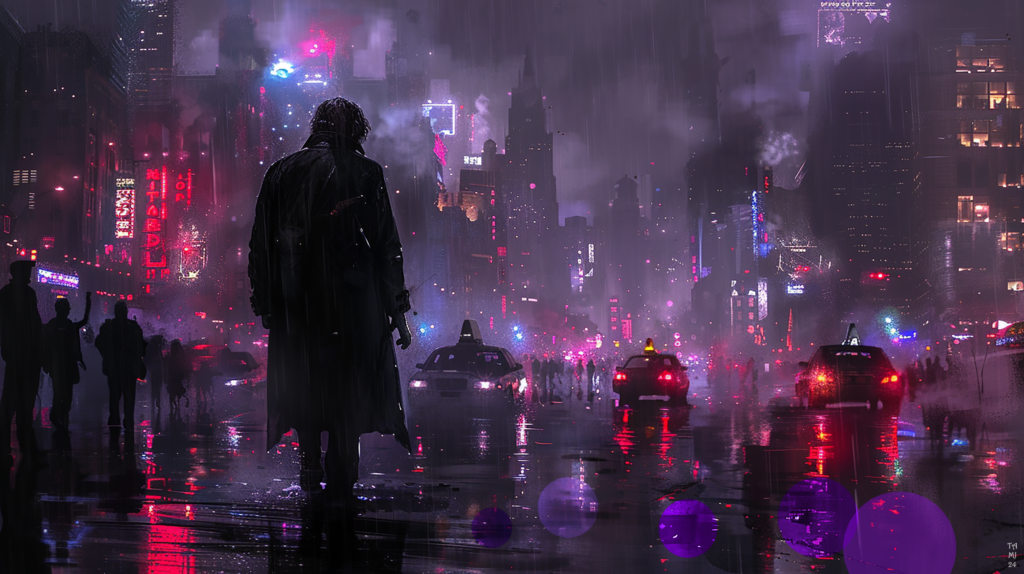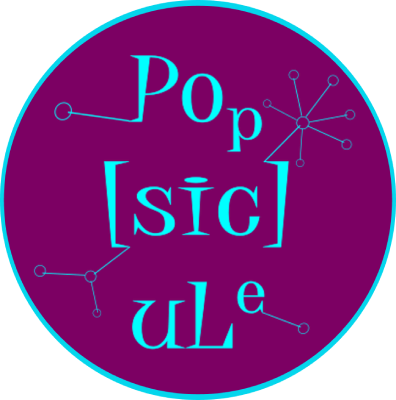“We are the Joker”
TERRIFIC. The Joker is one of our most popular and polarising nightmares in comics and (animated) film. He is a vicious vaude-villain, a violent clown, a creepy criminal and an ingenious mastermind – and, would you believe, in some stories he is a scientist. What can we learn from the Joker’s science machinations – Joker Science – about the cultural meanings of science? How does the Joker participate in, and contribute towards, complex cultural inquiries and transmedial discourses around science/technology and popular entertainment? What is the cultural role and relevance of the Joker?
For decades, Batman’s most iconic antagonist, the Joker, has held a strange fascination in our pop culture media – from countless DC comic book stories to major blockbuster films like the upcoming drama musical JOKER: FOLIES A DEUX, featuring Joaquin Phoenix (again) and Lady Gaga. Operating at the interface between humour and violence, chaos and crime, the Joker is a monstrous creature bereft of any ethical sensitivity – but with a high theatrical sensibility.
Across our research publications, we unpack defining characteristics of the enigmatic character – including his laugh(ter), science and violent delights – and argue that the Joker is so good at polarising, gripping and exciting our pop cultural imagination because he refers to, participates in and adds to a broader cultural and aesthetic context. That broader context is associated with playfulness, genre-twisting innovation, technical experimentation, striking juxtapositions, blurring boundaries and iconoclastic attitudes towards convention; it is the context of avant-garde aesthetic experience and modernist cultural production. Jack Nicholson’s Joker in Tim Burton’s 1989 Batman movie illustrates this point emphatically: “I make art until someone dies. See? I am the world’s first fully-functioning homicidal artist” – “You will join me in the avant-garde of the new aesthetic”. Our research illuminates what the avant-garde of the new aesthetic of the Joker is and to what extent we are all part of it. Through this lens, Joker stories show us how aesthetic traditions and styles of the turn of the century and the early-20th century keep percolating and unfolding into contemporary pop culture.
In this context, we argue that the Joker echoes, and takes to further extremes, what has been called ‘popular modernity’. Popular modernity is the era of Western popular culture that combined mass entertainment with an advanced technological matrix. In comics and (animated) films, Joker’s signature spaces, lairs and ‘stages’ for his criminal activities include circuses, vaudeville and music halls, freakshows, amusement parks, Gotham’s World’s Fair and cinemas, which can be read as ironic homages to the popularity and technological utopianism of the pleasure grounds of a modern industrial age – and their performance routines. This is not surprising, as the creators of the Joker were inspired by popular entertainment spaces and stages in the 1940s and since. A famous example is the 1928 film “The Man Who Laughs”, about a (disfigured) clown-like stage performer – a film that, in turn, drew on the traditions of 19th-century popular performances and inspired a number of Joker stories and iterations. However, the cultural continuity of these inspirations and associations also shapes the Joker’s (ab)use of science and technology, his sick humour and mass-clownification in contemporary Joker stories.
We investigate these manifold links to turn-of-the-century culture, early 20th-century design and technology, avant-garde ideas and their inherent ‘cinematic’ aesthetic, cultivated and reinterpreted – sometimes very explicit and self-consciously – alongside elements of the contemporary. We believe this is part of the magic potion that makes the Joker such a captivating creature in pop culture.

Discover our Joker research!
The Cheshire Clown: Joker’s Infectious Laughter
By Anna-Sophie Jürgens, Anastasiya Fiadotava & David C. Tscharke
Forthcoming (April 2024, Open access)
Abstract │ The Joker is one of our most notoriously laughing pop cultural nightmares. He creates worshippers and victims by spreading his infectious laugh and is both in personal union: one of the most polarising ‘gods’ and one of the most unholy and vile ‘monsters’ in popular culture. In DC comic books and (animated) films, Joker’s laugh has the ability to detach itself from that of the violent clown. It has the ability to spread. In visual fiction, Joker’s laugh is contagious in two ways: on the one hand, as a form of physical and mental illness, and on the other, as a symbolic vehicle for civil disobedience, escalating social protest and outbursts of public violence. In both cases, Joker affects the physiology of others by ‘jokerising’ them – those ‘infected’ by the Clown Prince of Crime not only behave but also look like the Joker. While other authors of this edited collection argue that humour and laughter turn gods into humans and bring to light the human in the monstrous, this chapter explores the opposite: monstrous laughter as a wicked facial disease, as the embodiment of sick jokes and a threat to society and the human. Focusing on the iconography and ‘epidemic’ impact of laughter in recent Joker stories, this chapter clarifies the post/moral ‘cultural work’, ‘aesthetic achievements’ and cultural ideas of science and art personified in one of the most iconic supervillains of our time.
From Caligari to Joker: The Clown Prince of Crime’s Psychopathic Science
(2021, Open access)
By Anna-Sophie Jürgens, David C. Tscharke & Jochen Brocks
https://doi.org/10.1080/21504857.2021.1989005
Abstract │ From the very beginning of his adventures in the DC universe, the Joker has been associated with science, particularly (bio)chemistry and microbiology. Exploring some recently published narrative examples of Joker science together with the insight provided by virology and chemistry, this paper examines the scientific and cultural ideas of science conveyed by the violent clown and his scientific extravaganzas. Psychopathic, mannerist Joker science, this paper shows, is intrinsically linked to the realms of hypnotism, hysteria, ecstasy and the ‘hysterical realities’ of different historical, physical, medial and cultural settings. Joker science is not only about how chemistry and virology might affect the human body but it also explores notions of possession and control – contemporary notions of what was once investigated as ‘criminal suggestion’ or ‘hypnotic crimes’ on science stages and in early film. Joker science ‘jokerises’: it leads to loss of motor control, muscular contortions, cramps, fatal convulsions and frenetic, deadly laughter, reminiscent of the ‘strange spectacle’ of hysterics and the ‘science performances’ and ‘hystericulture’ developed by the showman and researcher Charcot and his many fictional revenants, all characterised by a peculiar position between science, entertainment and the occult.
The Pathology of Joker’s Dance: The Origins of Arthur Fleck’s Body Aesthetics in Todd Phillips’s 2019 Joker Film (2020)
By Anna-Sophie Jürgens
https://doi.org/10.1080/01472526.2020.1816740
Abstract │ Todd Phillips’s 2019 movie Joker reconfigures and actualizes body aesthetics and performance traditions—eccentric movements and so-called epileptic dancing—celebrated around 1900 on the popular stage and in early film. This body language, consisting of bizarre contortions, dislocations, jerking, and gesticulating, is linked to medical discourses about the nervous system, and can be traced in popular theater throughout the twentieth century. This paper examines how it emerges in Arthur Fleck, aka the Joker.
Batman’s Joker, a neo-modern clown of violence (2014)
By Anna-Sophie Jürgens
https://doi.org/10.1080/21504857.2014.926956
Abstract │ Besides the doltishly clumsy, amusingly simple and happily idiotic type of clown, there is the evil violent clown. Violent clowns can be traced back to the (circus-)pantomimes of the nineteenth century, to circus tradition and circus literature. Thus, on the basis of the popular corpo-eccentric clown-theatre presented by the French Théâtre des Funambules between 1819 and 1846, as well as the pantomimes of the brothers Hanlon-Lee, this article presents Batman’s Joker as descendant of a specifically violent circus tradition and its reflection in literature. Baudelaire and Adorno understand the aesthetic of violence characteristic of these circus pantomime clowns as the essence of modernity. The appearance and playful rearrangement, montage and reinterpretation of historical (circus) clown elements are typical for Batman’s Joker. Thus, he can be described as a neo-modern clown of violence.
Joker’s Techno-Scientific Delights: Mannerist Science and Technology in the Animated Joker Universe (2020, Open access)
By Anna-Sophie Jürgens
Fantasy/Animation
Abstract │ Numerous animated Batman films explore our cultural fascination with new visionary technologies and sciences. While much has been written on Batman’s futuristic vehicles, technological gadgets and techno-stunts, the Joker’s way of representing fantasies of our technological future and scientific extravaganzas has barely been discussed. As we will see, Joker’s science worlds are mannerist worlds, and thus expressions of a particular facet of fantasy.

Related articles
From Harleen Quinzel to Harley Quinn: science, symmetry and transformation (2022, Open access)
By Dan Santos & Anna-Sophie Jürgens
https://doi.org/10.1080/21504857.2023.2249978
Abstract │ Harley Quinn has become an important and popular character in the DC Universe, especially for representations of women scientists in comics and the associated cinematic and TV adaptations. Understandably, much of the analysis of this character has tended to focus on her relationship with the Joker and the gender-based dimensions of this dynamic. However, to distill her identity to these dimensions would be unnecessarily, even unfairly, reductionist, and would narrow our understandings of a rich and complex character. By focussing on her identity as a scientist, this article offers a different analytical lens through which to understand Harley Quinn. Drawing primarily from Stjepan Šejić’s Harleen (2020), with supporting insights from appearances in other DC comics, we examine the ways in which her scientific training and aspirations shape her transformation from Harleen Quinzel to Harley Quinn. Specifically, we demonstrate how symmetry, as an orienting concept, is useful for analysing how scientific logics and practices inform and enable this transformation. In doing so, we hope to both enrich understandings of Harley Quinn and foreground science as a potentially useful broader lens through which to understand other significant themes and characters in the DC Universe.
Vaude-villain and violent funster: Harley Quinn and humour (2024, Open access)
By Anna-Sophie Jürgens, Anastasiya Fiadotava & Crys-Leigh Clitheroe
https://doi.org/10.1080/21504857.2024.2330587
Abstract │ Harley Quinn is not only DC’s ever-yearning romantic Joker victim – a libidinous, self-centred coarse bumpkin in suspenders, who regularly gets thrashed without mercy – but also an eccentric clown and violent vaude-villain. We argue that the diversity of Harley Quinn’s personality as portrayed by different writers and impersonated by cosplay fans is intrinsically connected to the complex and multi-dimensional humour that is associated with the character. Drawing on humour and clown theories, we unpack Harley Quinn’s obvious but under-examined humour facets – including her humorous contradictions, meta-humour and clown iconography and routines – with the aim of better understanding her specific comics aesthetics and their humorous momentum both within her fictional worlds and beyond.
Batman and the World of Tomorrow: Yesterday’s Technological Future in the Animated Film Batman: Mask of the Phantasm (2021)
By Anna-Sophie Jürgens
https://doi.org/10.1177/174684772096545
Abstract │ Examining facets of modernist visions of our technological future and of theatricalized city and stage spaces in the 1993 animated film Batman: Mask of the Phantasm, this article explores the cultural meaning of technology in graphic fiction. The confrontation scene between Batman and Joker in the grounds of Gotham’s World’s Fair, the author argues, echoes the 1939 New York World’s Fair with its modernist urban optimism and pop cultural fascination with new visionary technologies, as well as the modern history of moving pictures and multi-media spectacle. The article spotlights the power of the Batman story to participate in, and contribute towards, complex cultural inquiry and transmedial discourses around technology and popular entertainments. Through the exquisite medium of animation – which allows animated characters to be placed on an abstract architectural city stage – Mask of the Phantasm also embodies modernist visions of the ‘ideal’ stage character in a medium that creates non-realist art and more complex possibilities for movement, thus transporting modernist thinking into the 20th century.
The Cheshire Clown: Joker’s Infectious Laughter
By Anna-Sophie Jürgens, Anastasiya Fiadotava & David C. Tscharke
Forthcoming (April 2024, Open access)
Abstract │ The Joker is one of our most notoriously laughing pop cultural nightmares. He creates worshippers and victims by spreading his infectious laugh and is both in personal union: one of the most polarising ‘gods’ and one of the most unholy and vile ‘monsters’ in popular culture. In DC comic books and (animated) films, Joker’s laugh has the ability to detach itself from that of the violent clown. It has the ability to spread. In visual fiction, Joker’s laugh is contagious in two ways: on the one hand, as a form of physical and mental illness, and on the other, as a symbolic vehicle for civil disobedience, escalating social protest and outbursts of public violence. In both cases, Joker affects the physiology of others by ‘jokerising’ them – those ‘infected’ by the Clown Prince of Crime not only behave but also look like the Joker. While other authors of this edited collection argue that humour and laughter turn gods into humans and bring to light the human in the monstrous, this chapter explores the opposite: monstrous laughter as a wicked facial disease, as the embodiment of sick jokes and a threat to society and the human. Focusing on the iconography and ‘epidemic’ impact of laughter in recent Joker stories, this chapter clarifies the post/moral ‘cultural work’, ‘aesthetic achievements’ and cultural ideas of science and art personified in one of the most iconic supervillains of our time.


